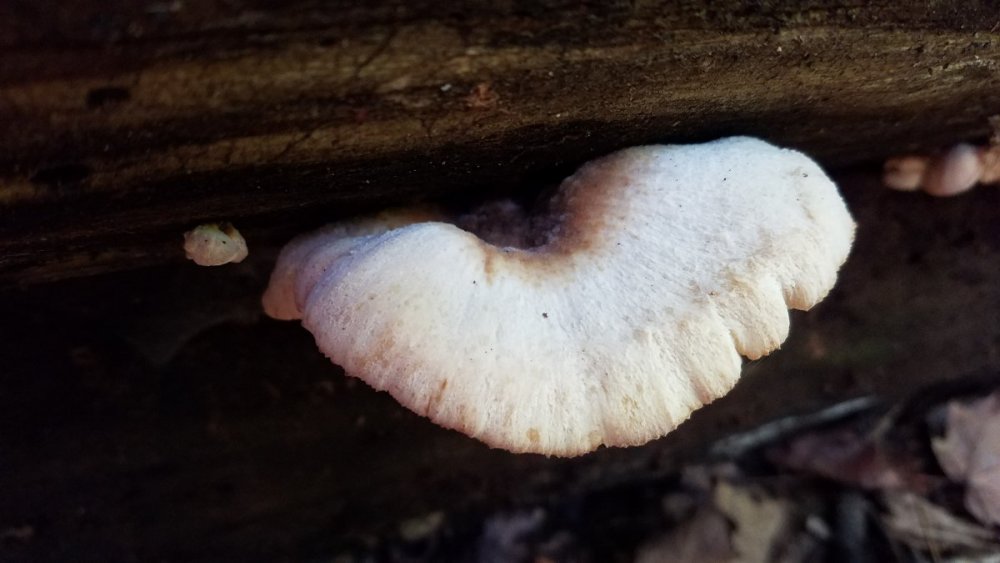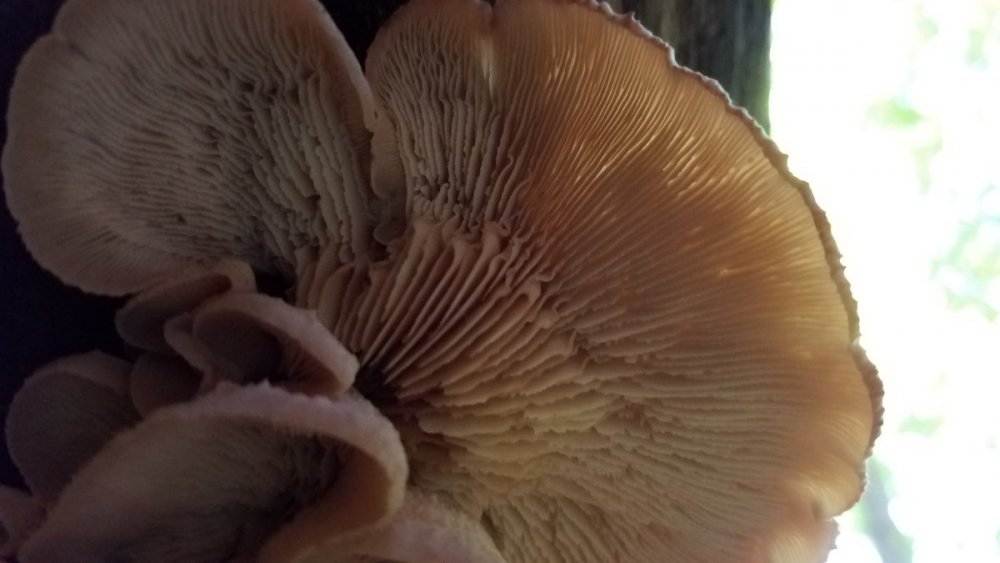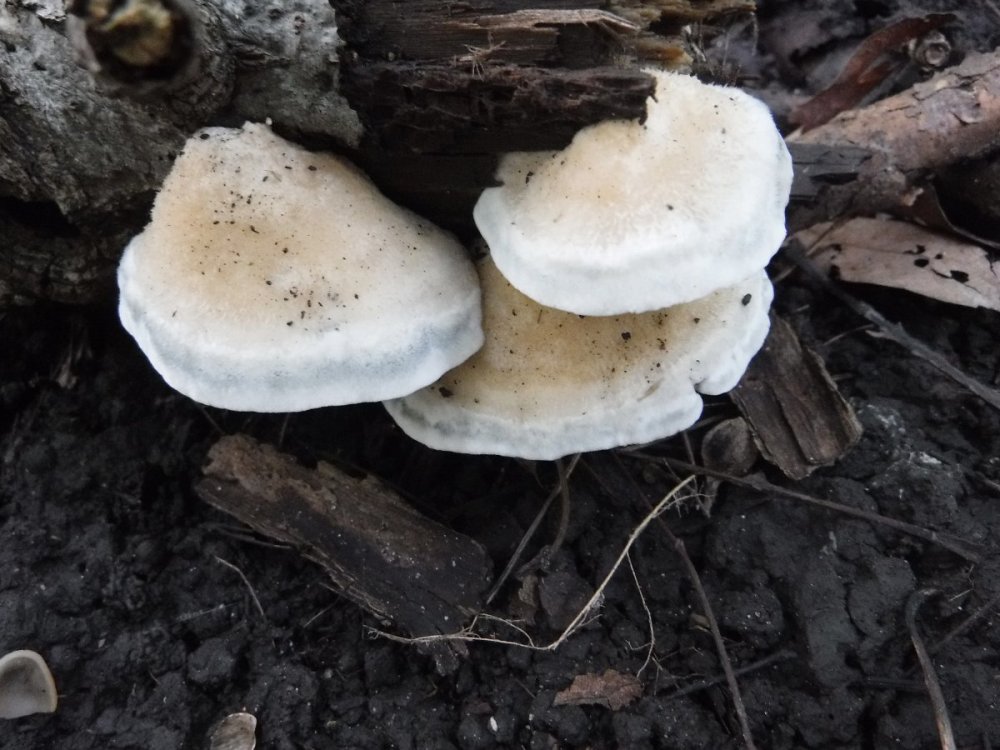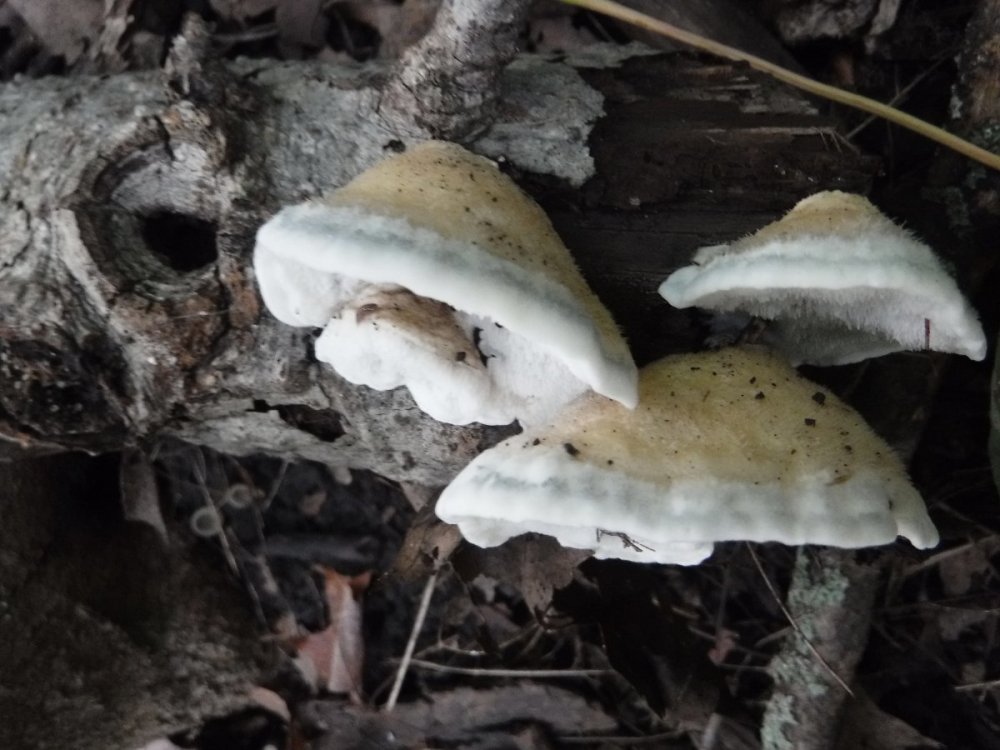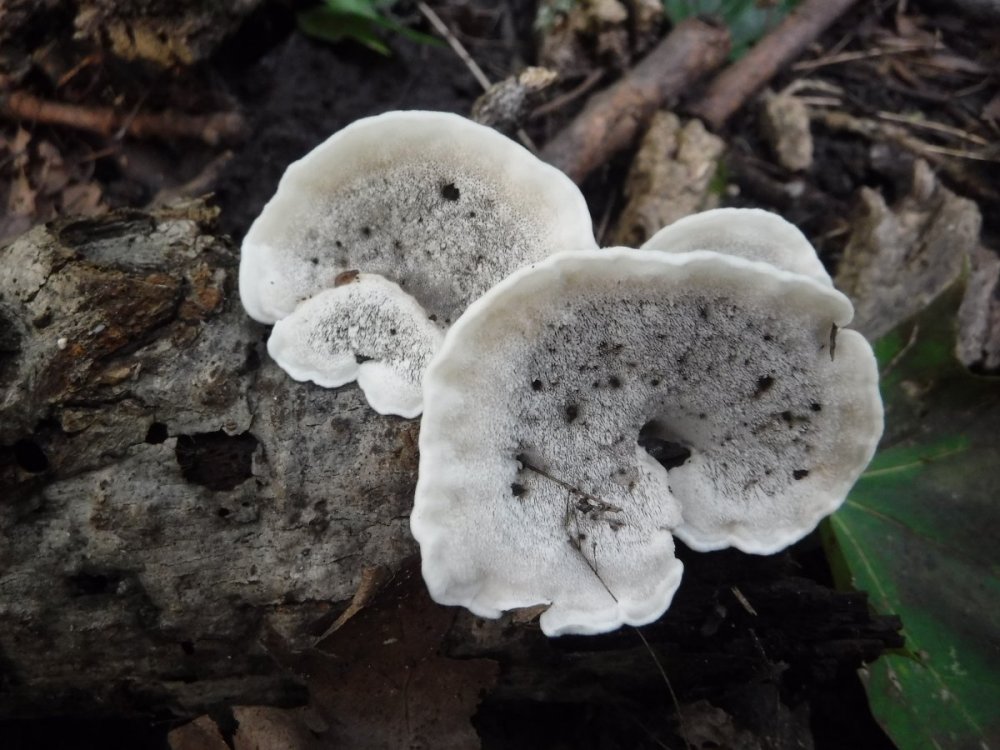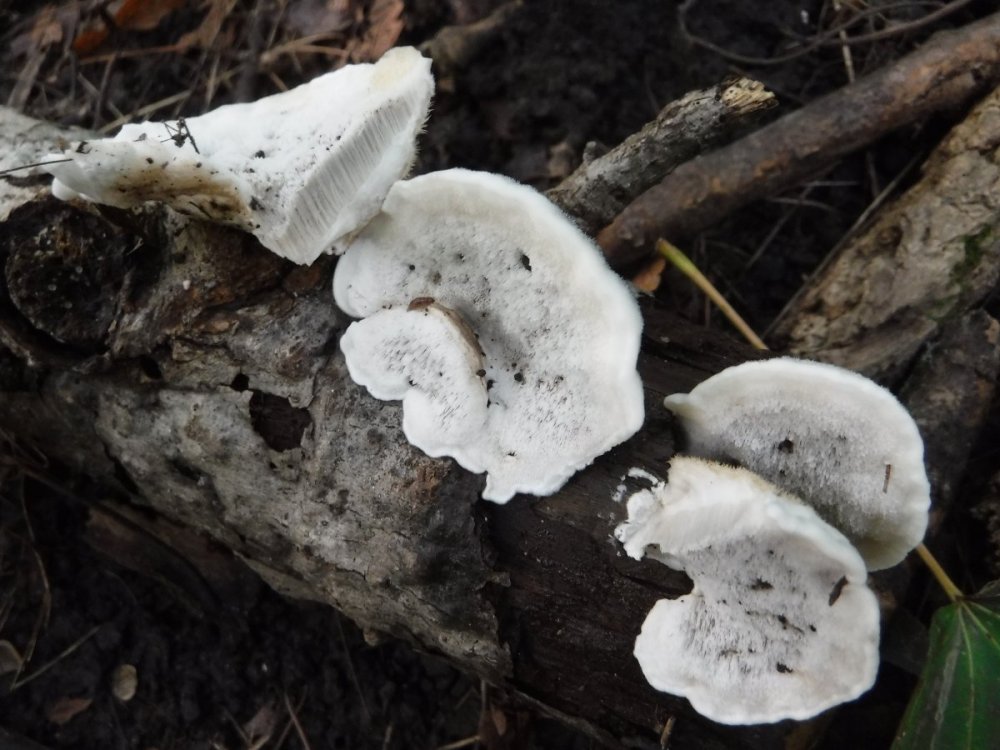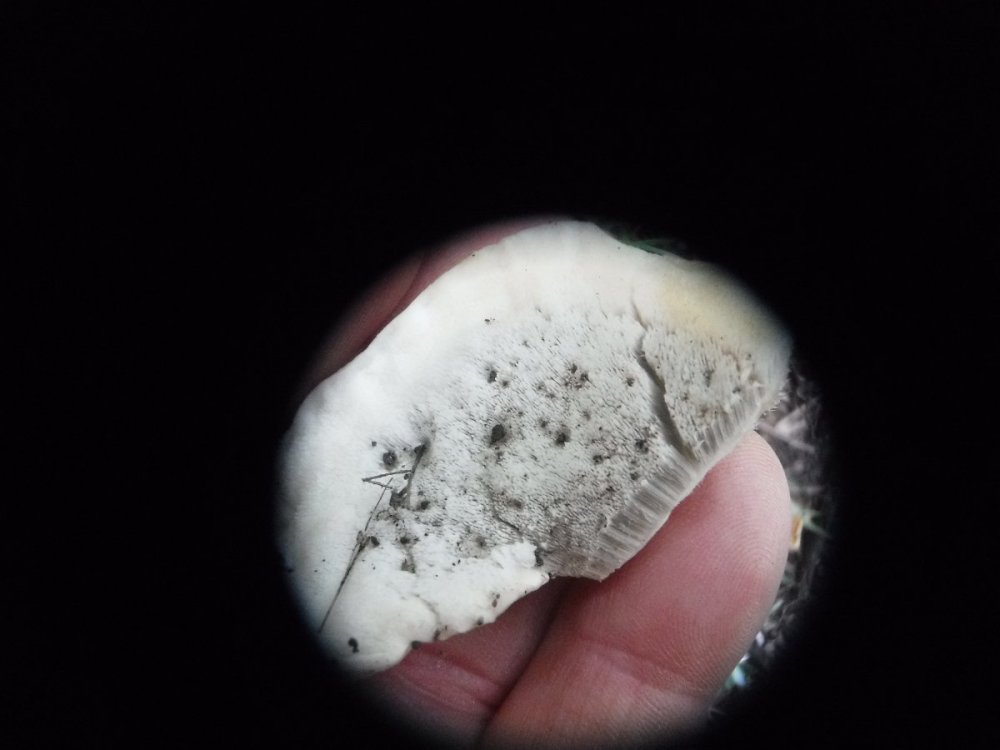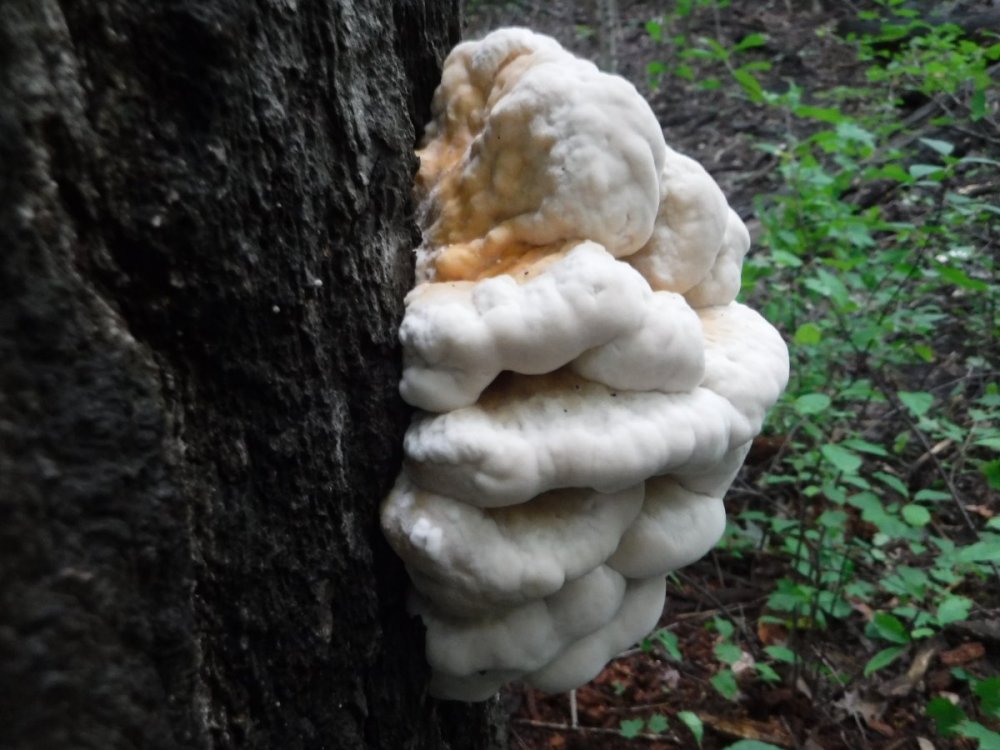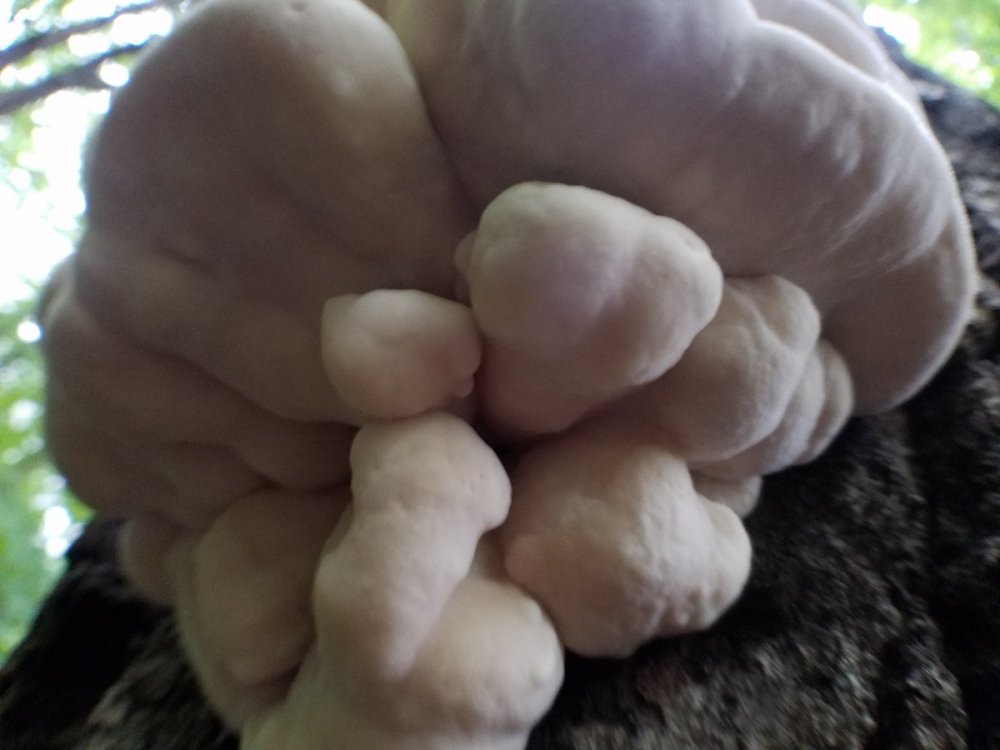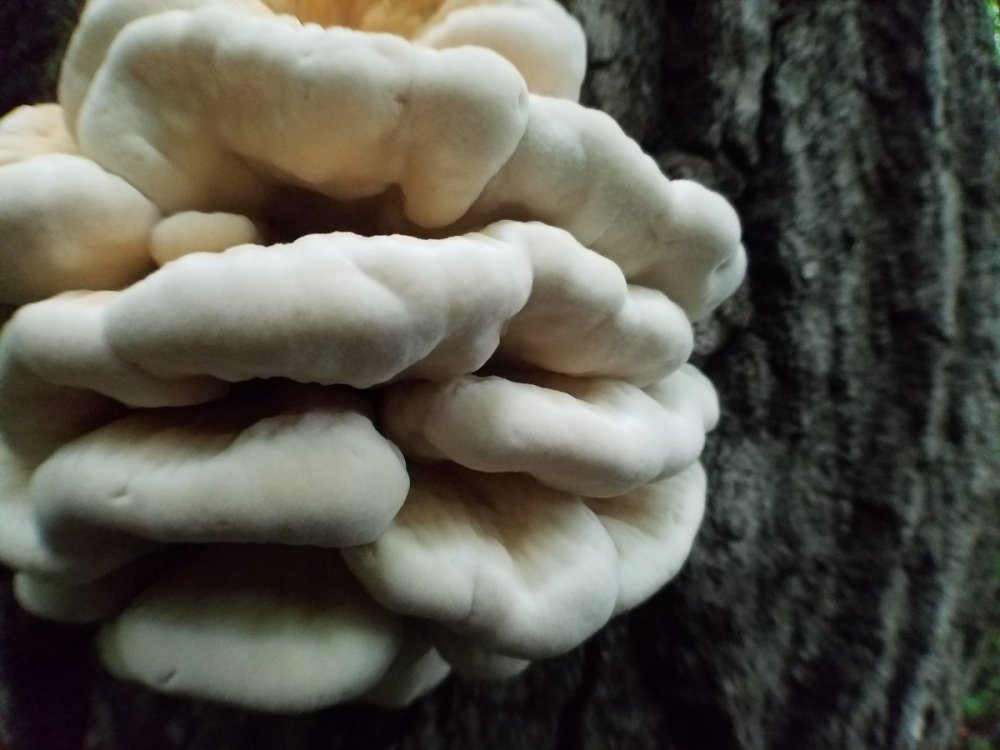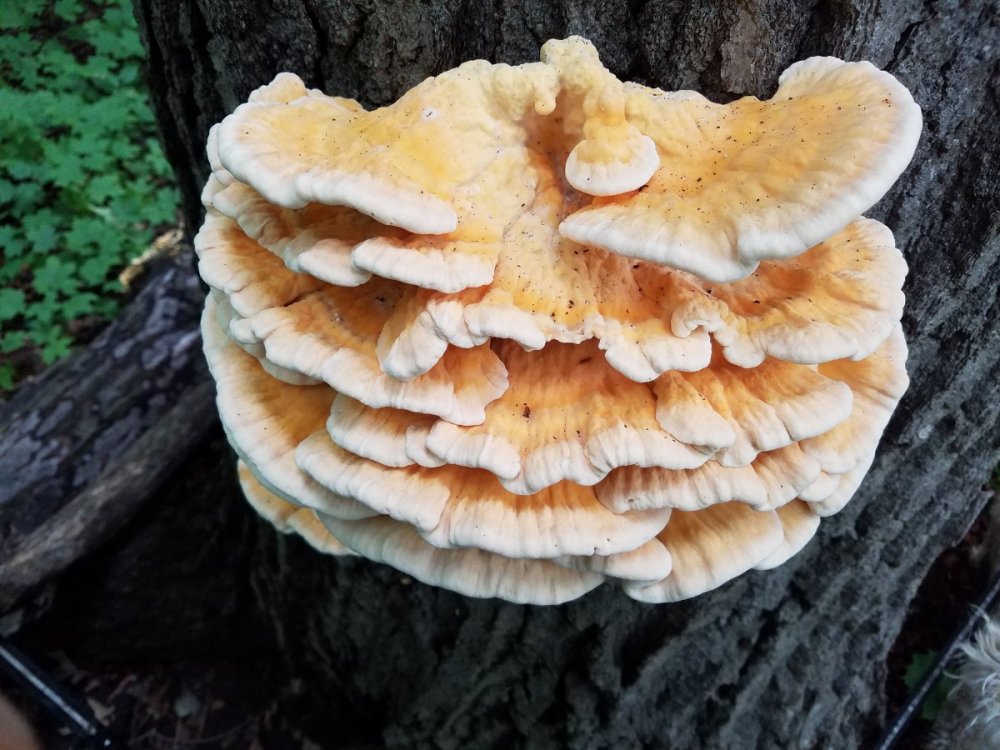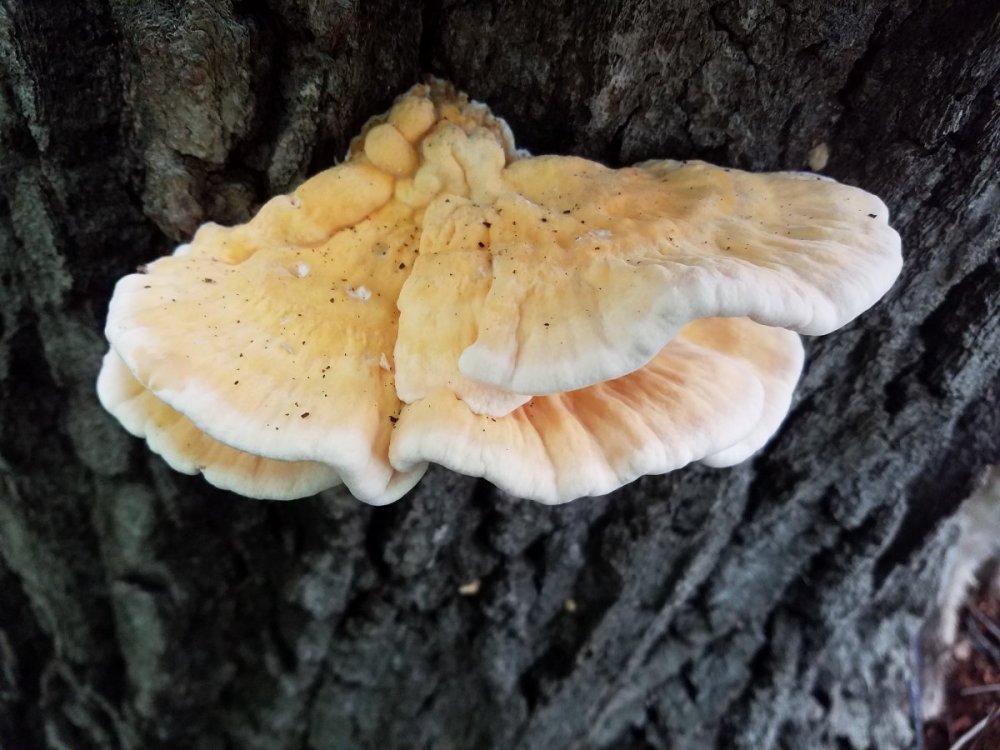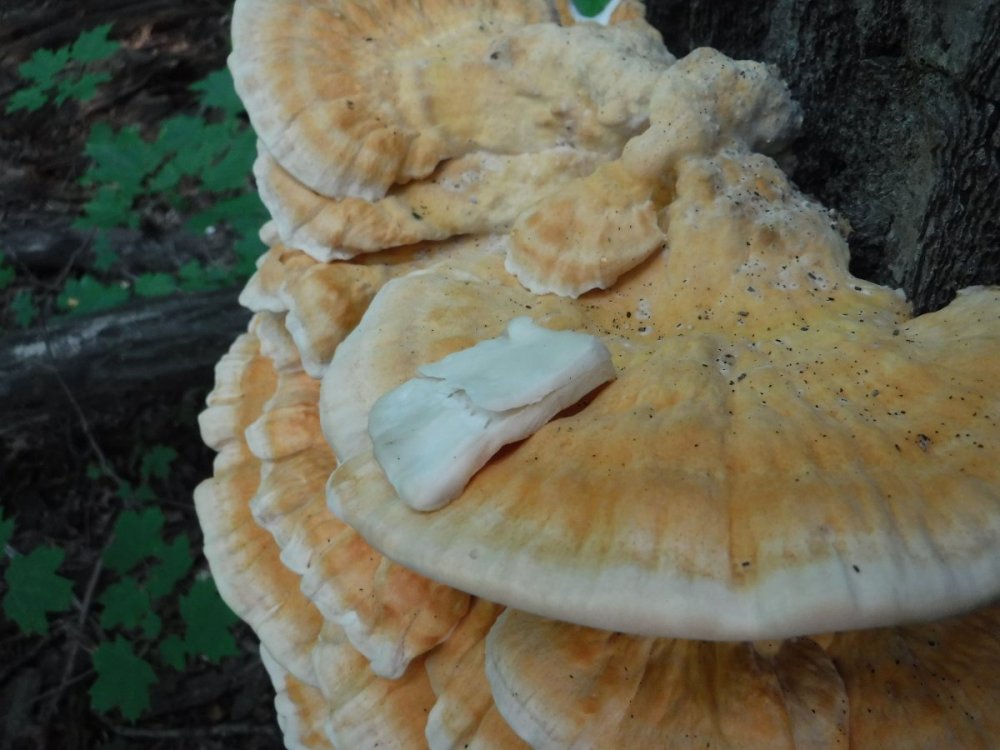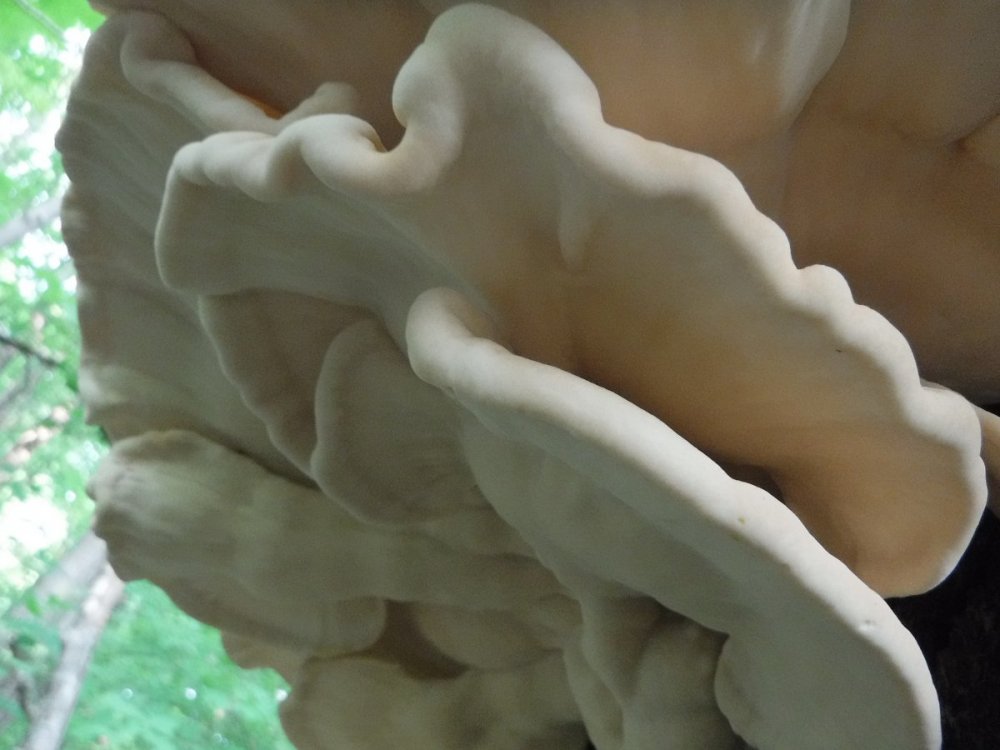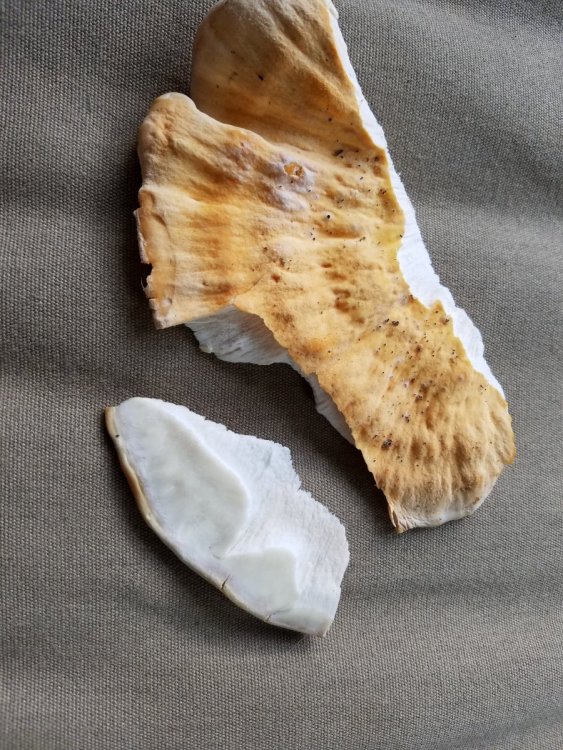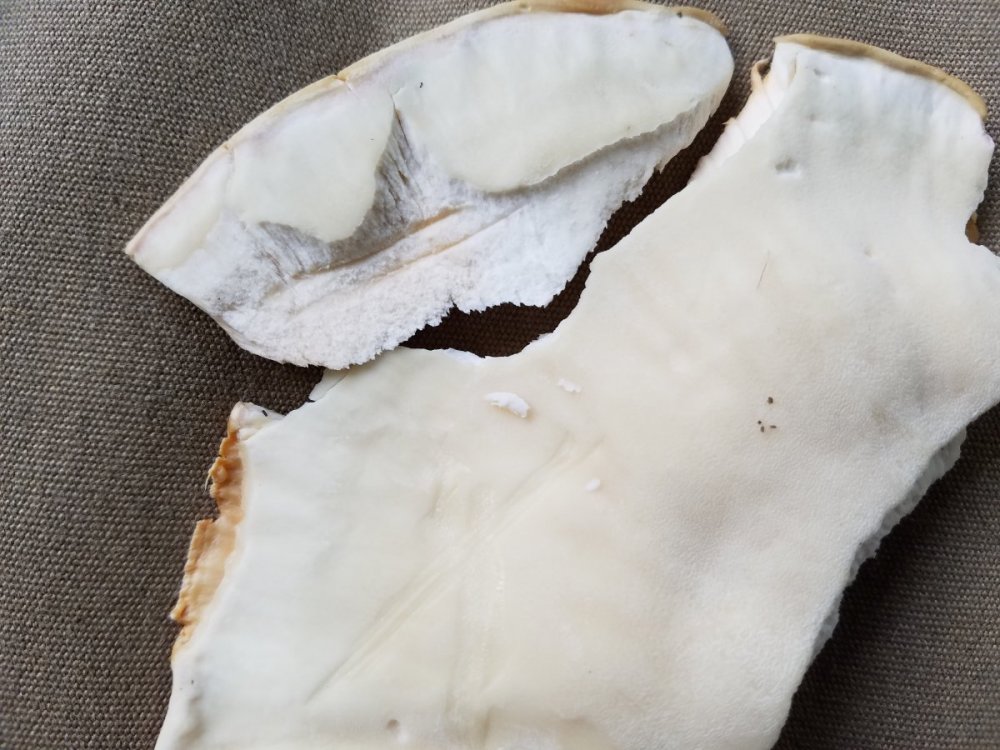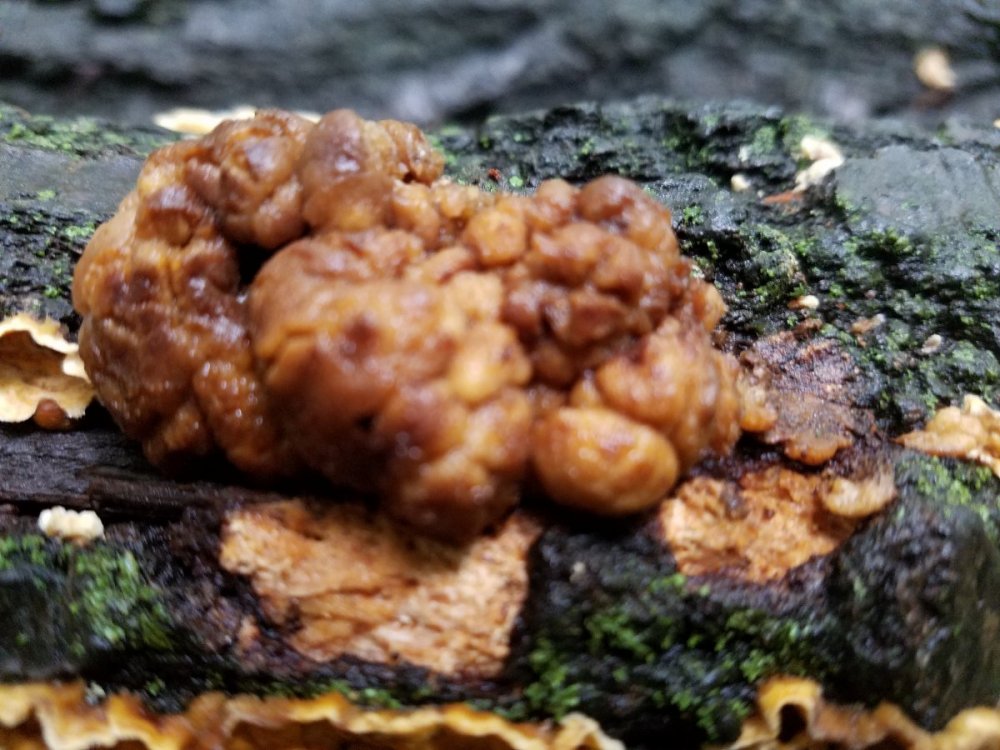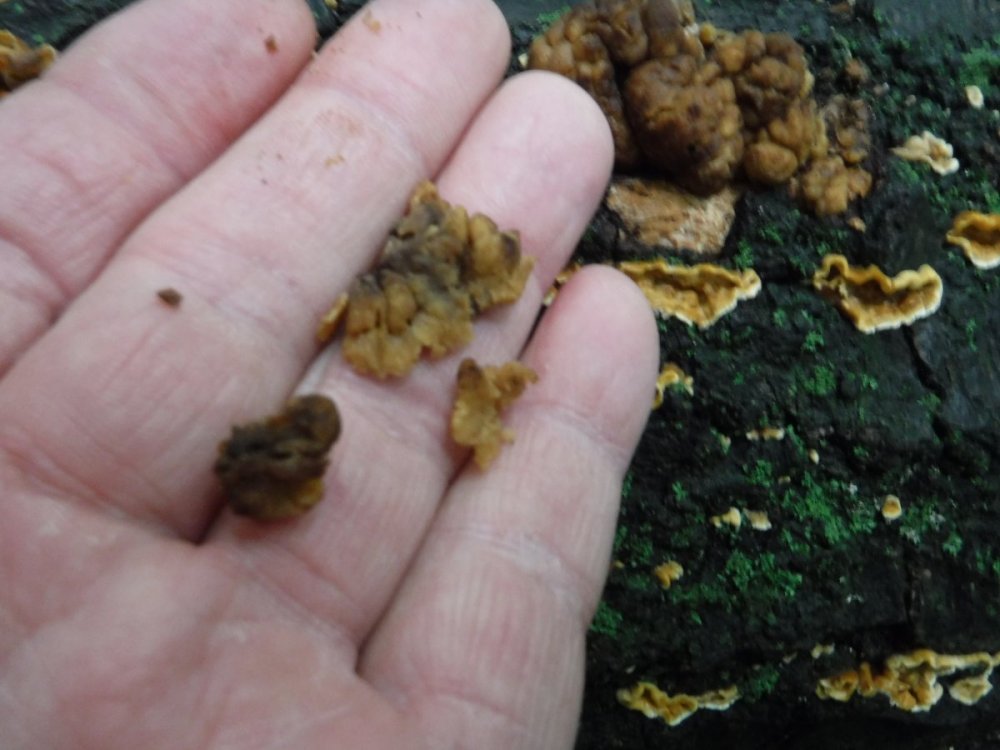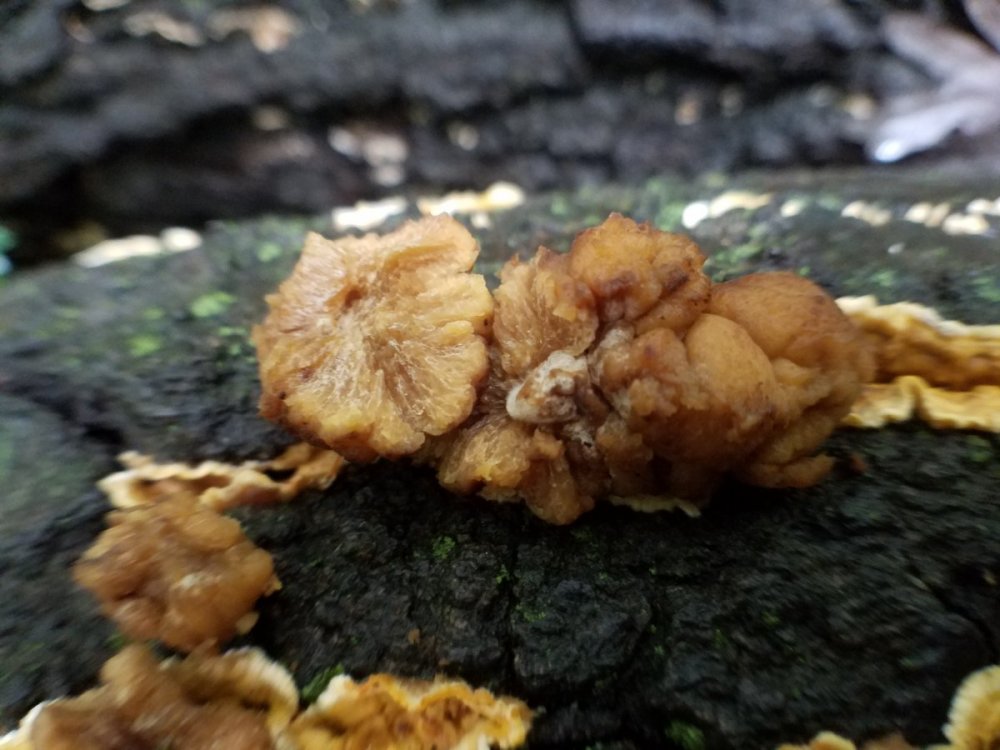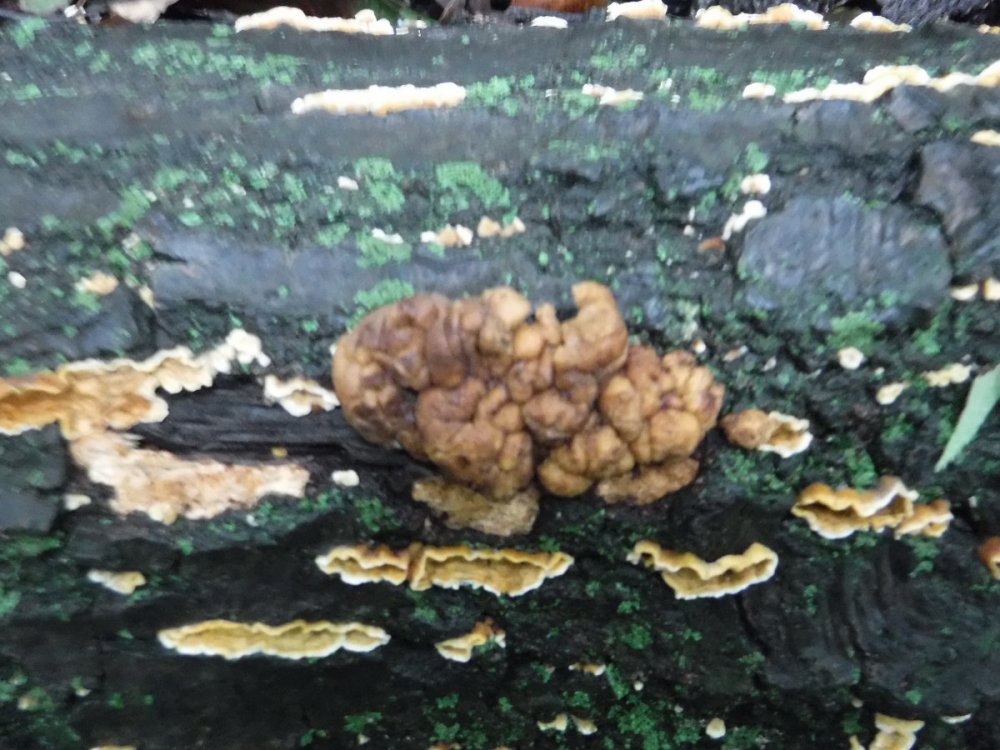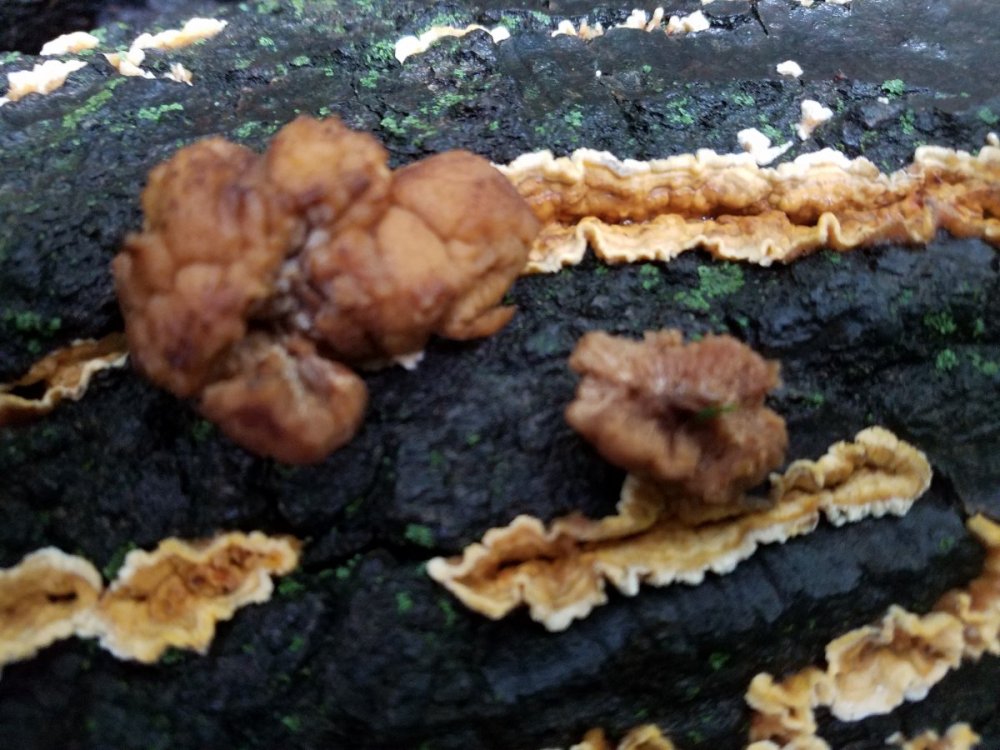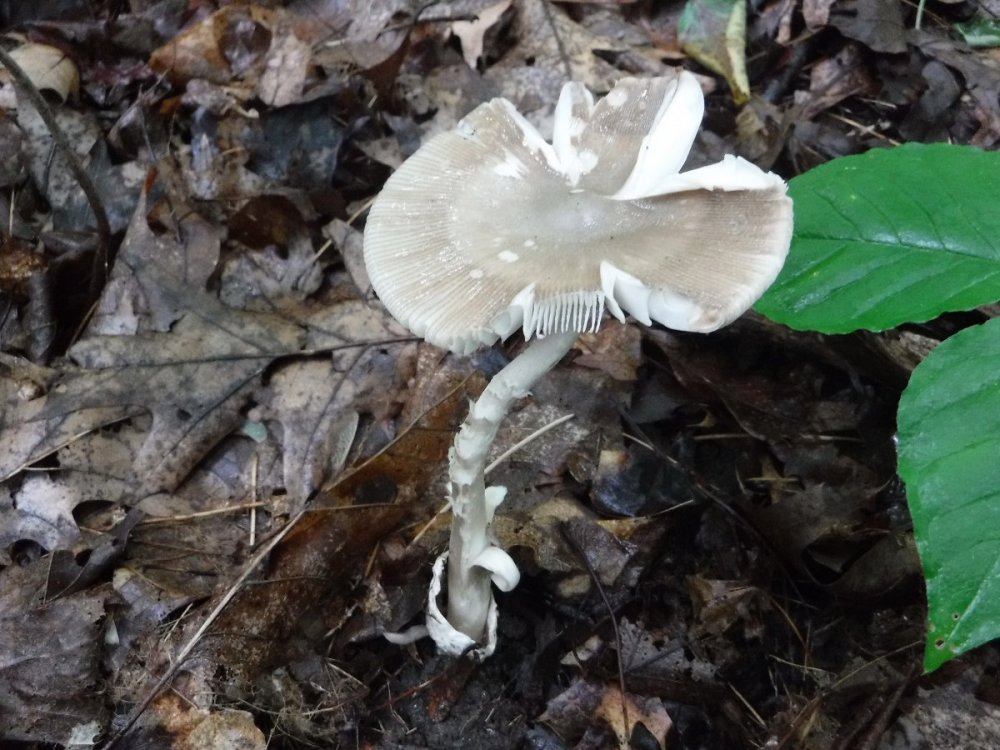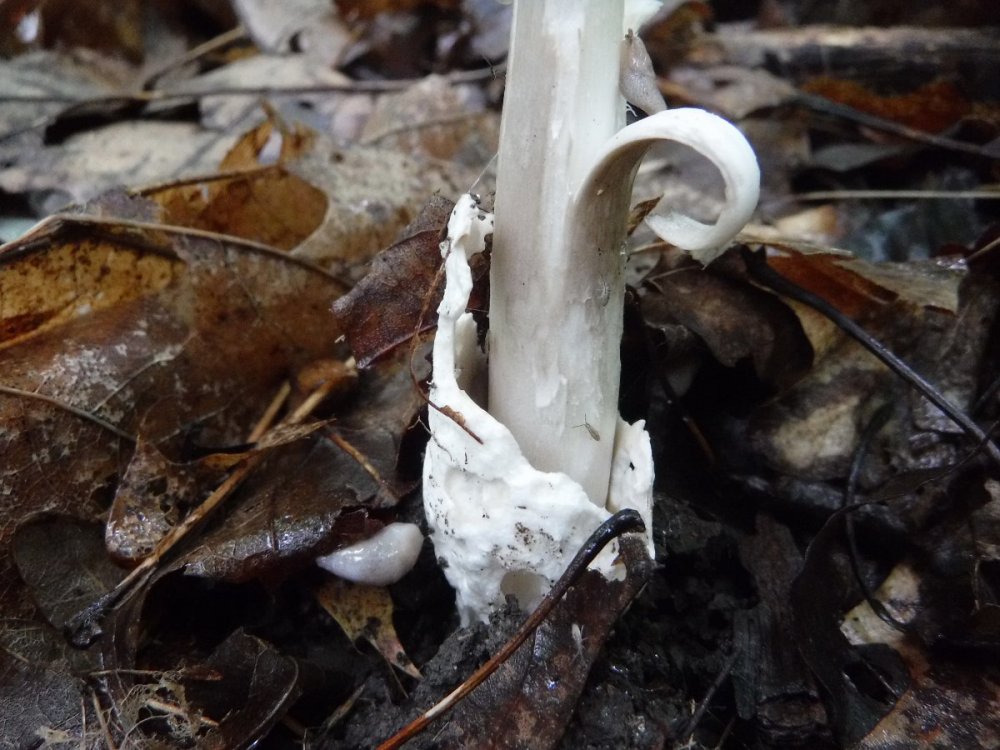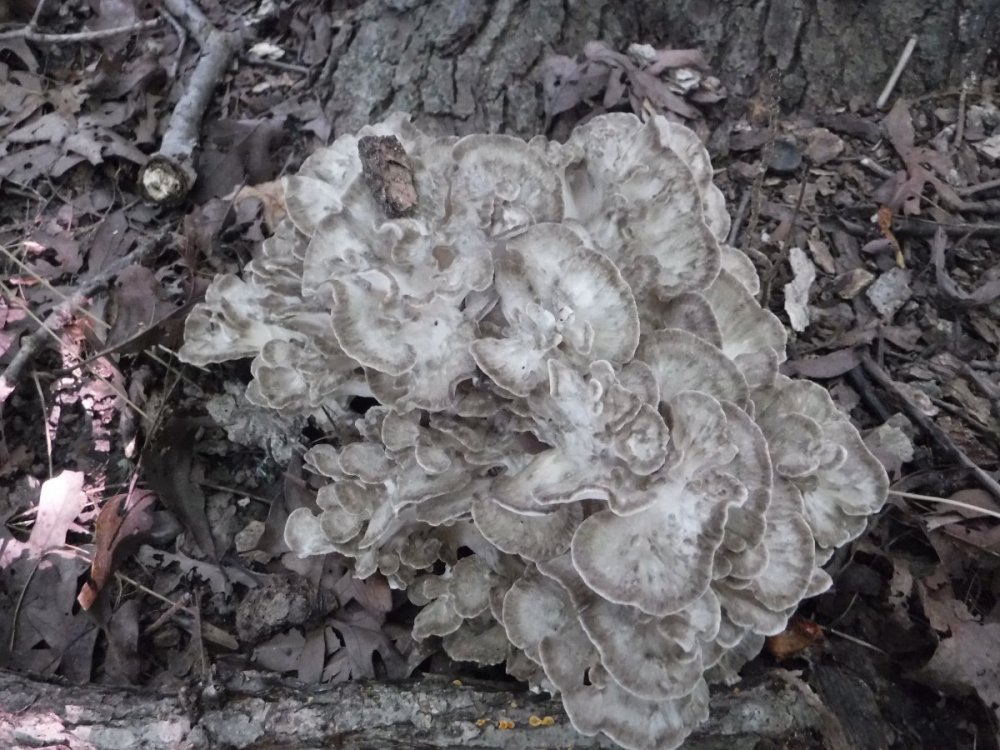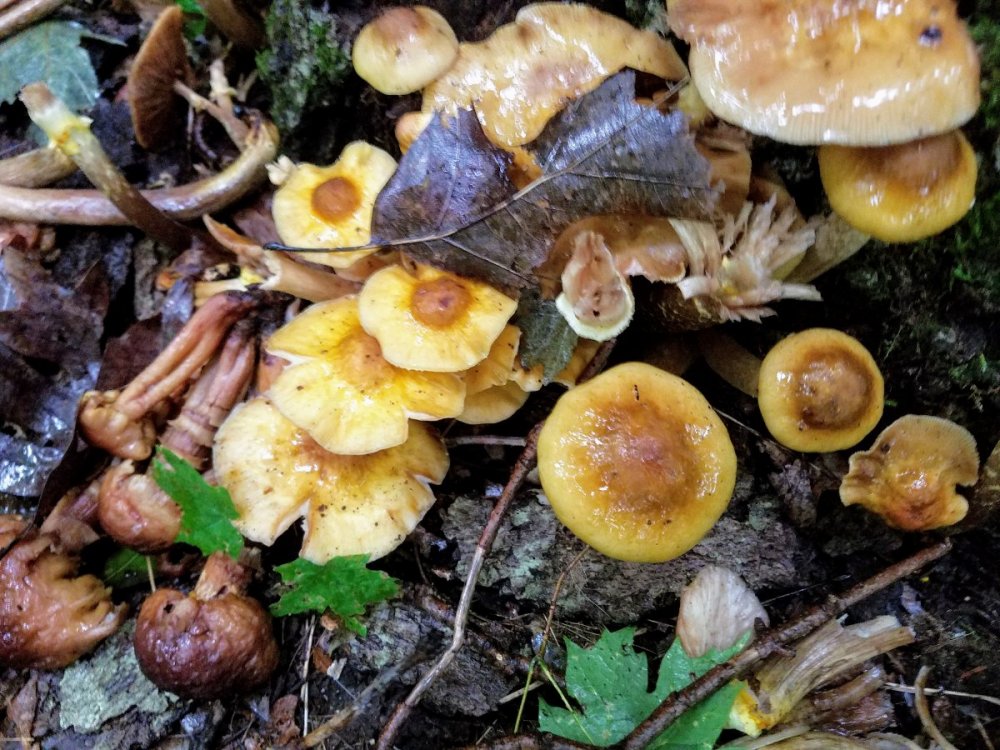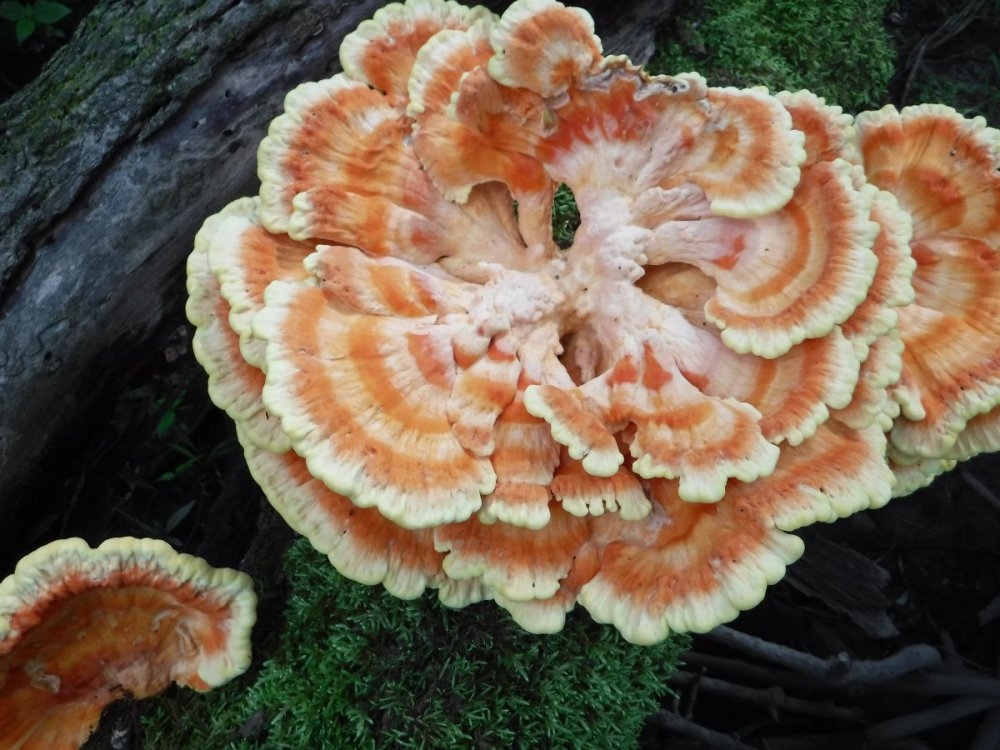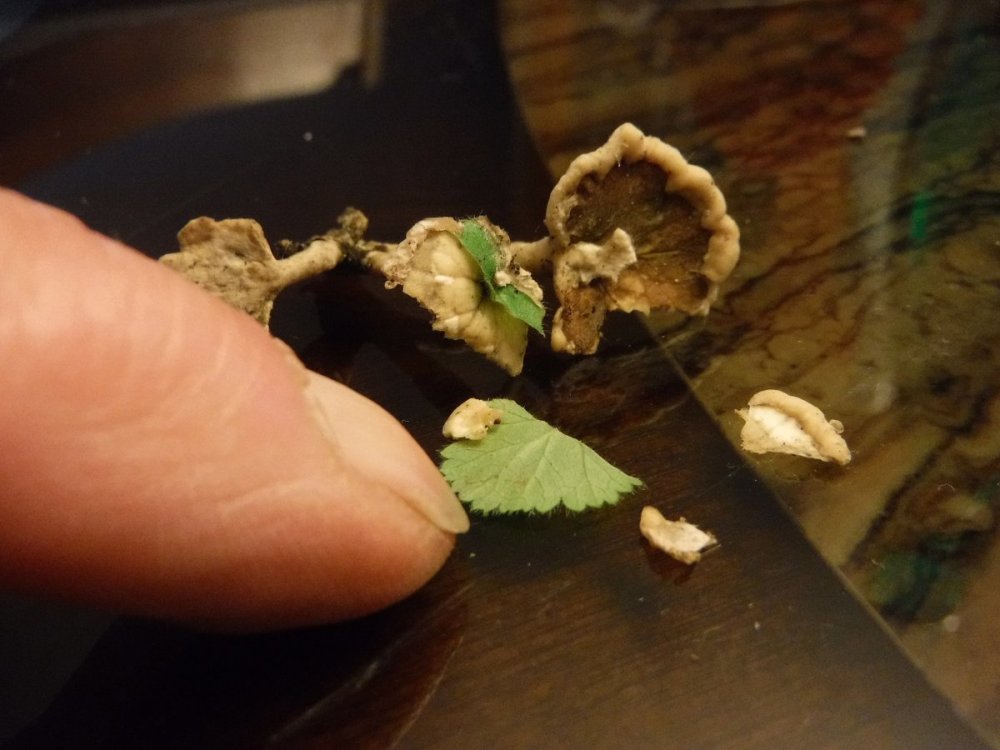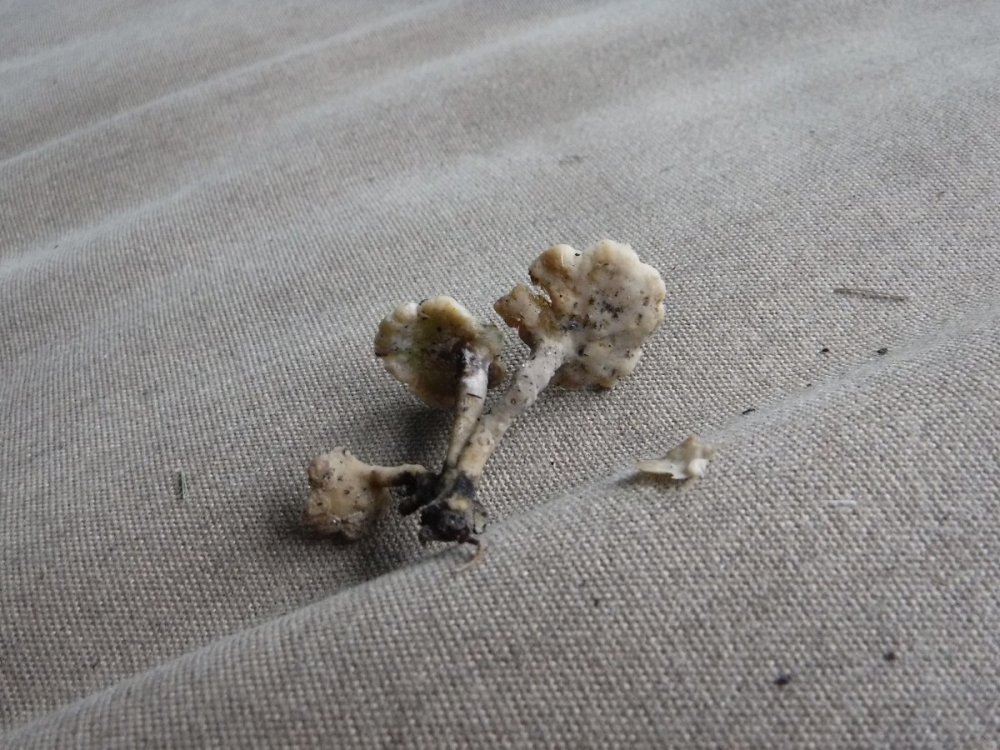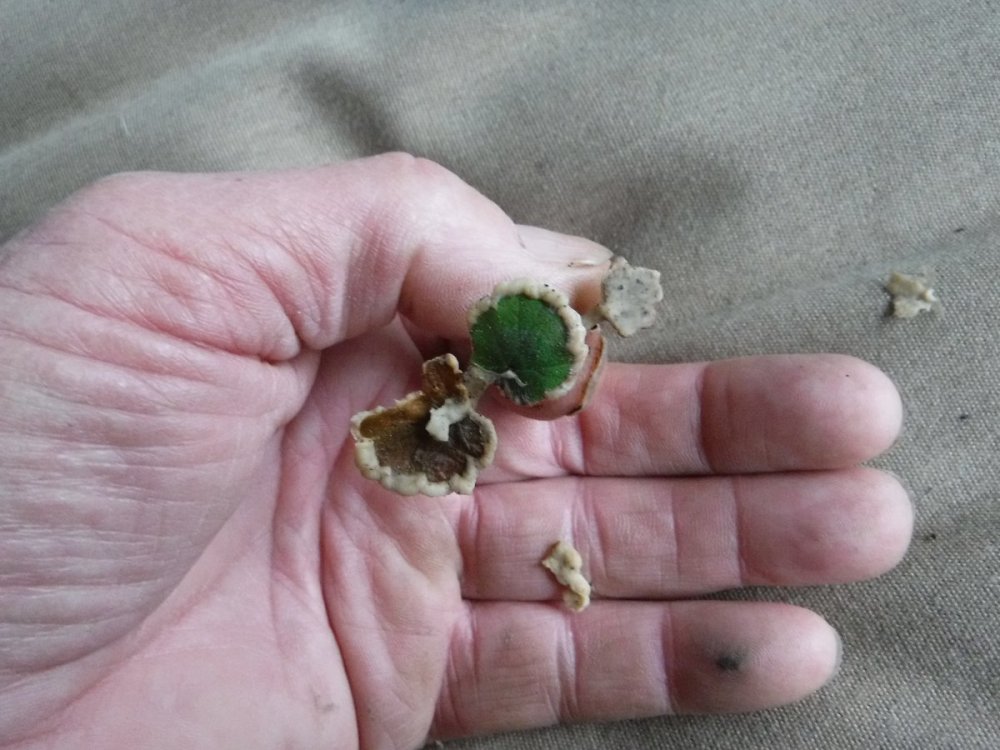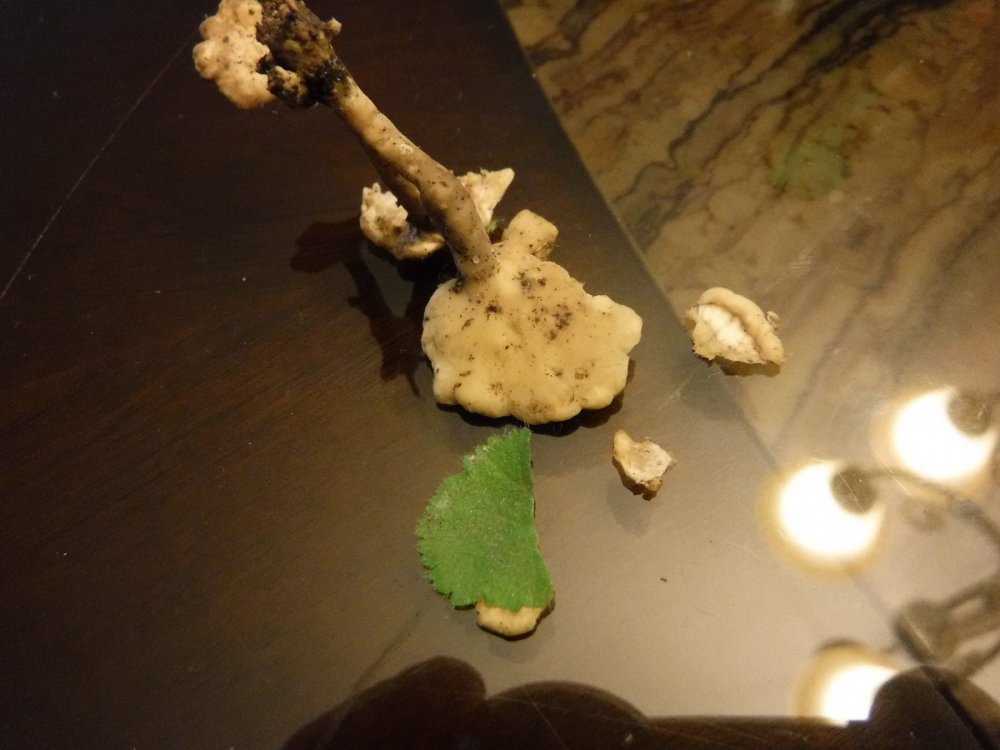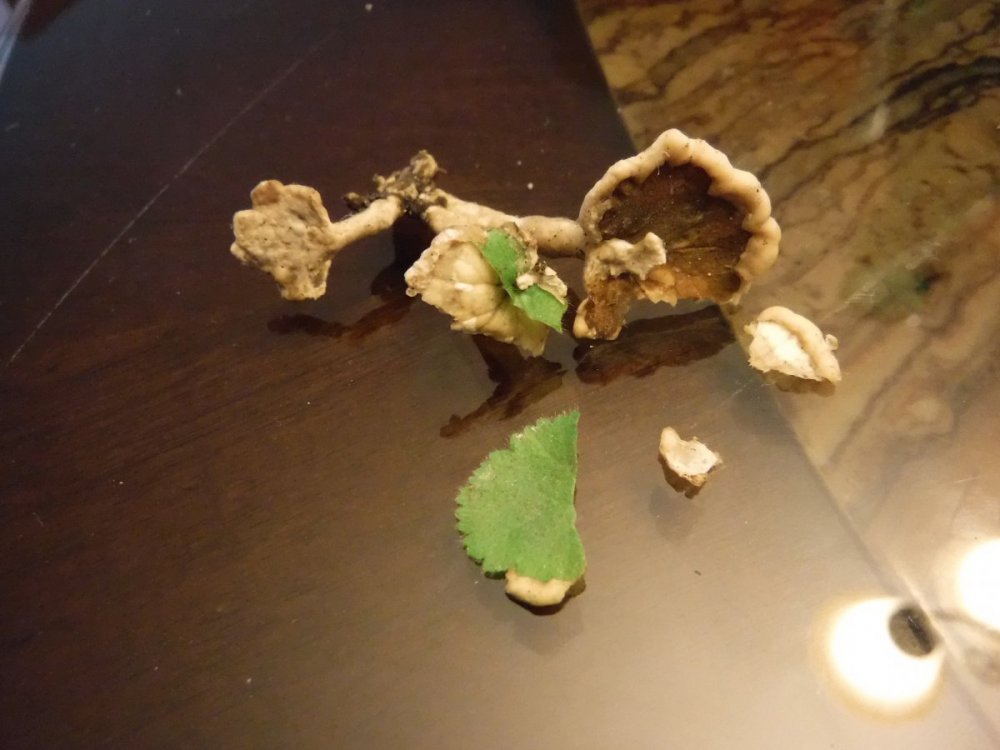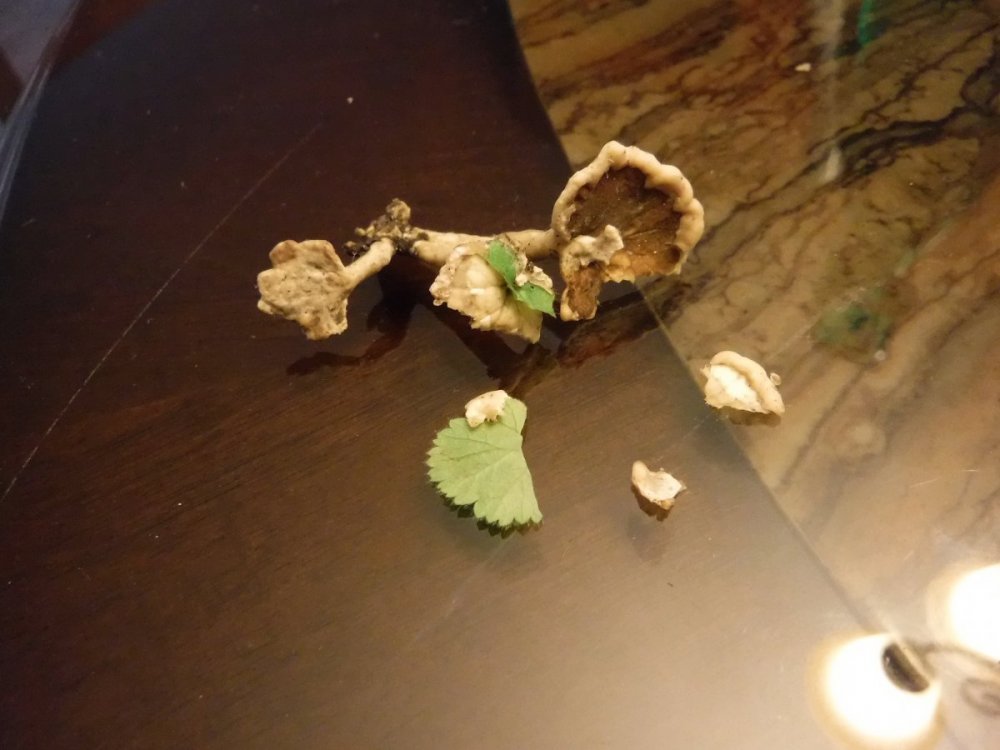-
Posts
114 -
Joined
-
Last visited
Everything posted by Howard
-
There aren't many details shown, so not very confident, but these look like they could be one of the Clitocybe funnel mushrooms; possibly C. odora (Aniseed funnel) or C. nebularis (clouded funnel). A photo of the gills would be helpful. Both C. nebularis and C. odora grow near deciduous and coniferous trees. Your specimens are in a bed of moss; how far from the pine trees? Both Clitocybes are said to hide in bushes and shrubs, but C. nebularis is more gregarious than C. odora and is often found in "fairy rings". Did you notice any smell? C. odora has a strong anise odor.
-
I found these over two years ago, so memory of details is faint. They remind me of the helmets the doughboys wore in WWI - with dents. They were growing on the ground, whether from buried wood, I don't know. Caps were varying shades of brown, shiny, smooth, bald and glossy but not slimy or sticky. The older specimens seemed a little darker brown than the young. They were generally round, had a large umbo and older specimens tended to irregularly curl upward along the margins. Gills were lighter than the cap (off white with shades of browning between the gills). As I recall, they didn't stain or bruise from damage. Gills narrowly attached to stipe. Some short gills, but not as frequent or uniformly dispersed as on other species. Stipe was pale off white, bare of adornments, except a persistent whitish ring. Some reddish brown stains or bruising on base of stipe. No basal mycelium evident. I don't remember if there was any odor or taste. OOPS!!! That last pic isn't a mushroom, but very similar.
-
Yes, these are Armillaria or Desarmillaria (honey mushrooms) that have been parasitized and deformed by Entoloma abortivum and are called "shrimp of the woods". You may also find the gilled version of E. abortivum and the normal honeys in the same area. I find lots of Desarmillaria tabescens, the aborted honeys and the gilled E. abortivum lately in the same woods, but usually the aborted honeys and the gilled Entolomas seem to always be in a separate part of the woods from the non-aborted honeys. IDK, but maybe the Entoloma attacks ALL the honey mycelium in the area where it grows.
-
Ischnoderma resinosum, called the Resinous Polypore. I've never tried to eat them. According to Wikipedia, "Young, fleshy specimens may be cooked and eaten, but the species becomes hard and inedible later in life". I guess I can't get over seeing them after they turned rotten and got this mold all over them (the desire to try eating them went away, seeing this:
-
I found some A. pyriforme yesterday that looked like some exploded, as popcorn does when heated. This isn't from heat, though. We have been in a cool phase for a while. I doubt that they had been nibbled on by varmint because of how they look blown open. They may have had a burst of growth from the recent rains after a long dry spell and expanded faster than the skin could stretch. I've never seen puffballs do this before.
-
You're welcome. Just for kicks I tasted it and the tip of my tongue is still burning. I don't need any pepper on the salad I'm eating for lunch!
-
I just got back from a woods walk and was thinking of your post, so I shot a couple pics of L. ursinus. See how serrated the edges of the lamellae are? Also they have the slight pink tint I mentioned.
-
I agree with Dave; this looks more like Pleurotus than Lentinellus. The lamellae look too distantly spaced for L. ursinus. They don't seem to have the "distinctively saw-toothed" edges, as Mushroom Expert describes the serrations. The whole mushroom, especially the gills, appear too stark white to be L. ursinus, which, to me, always look a little buff colored with often a tint of pink; yours are very white, except for the outer margin of the pileus and the edges of the gills (which Kuo tells us P. ostreatus will also yellow and brown along the edges, as your second pic shows). I think this is from age and/or dry conditions. Your specimens seem to be mainly bald and I don't see the fuzzy hairs on the cap surface, especially near the base, which will begin turning brown at early maturity on L. ursinus. I wouldn't worry about doing the "nibble test" on this one. L. ursinus is so peppery, like Lactarius Piperatus), you won't get it past the tip of your tongue before ID'ing it as the bear, because the bear bites your tongue. As to smell, each of us has our own interpretation of smell; spicy, fishy, peppery - all hard for me to distinguish. I'd say taste a small piece and, if your mouth isn't burning, cook 'em and eat 'em.
-

ID REQUEST #2 - Illinois Dead Maple Tree
Howard replied to SashaySloth's topic in Identifying Mushrooms
These appear to be a Pholiota sp., maybe P. aurivella. -
Bayoufrogg: I just came across your post looking at older submissions. I think I may have found something similar, if not the same. I posted it here: Likely Laetiporus, unlikely characteristics? My questions about my specimen are the same as yours. If these are a new species or two new species, since we are distant from each other, I wonder how long they will remain unnamed? My sample looks even whiter on the pore surface than yours, so may be a different species. I saved the sample (air dried) and it hasn't changed in over 6 weeks, except the pores are more evident. When you first saw them were the brackets thick and soft? Did they have a smell? I thought my specimen smelled almost like licorice or anise. Interesting finds, whatever the species.
-

ID Request - Eastern Ontario - Base of Tree
Howard replied to FrankJames's topic in Identifying Mushrooms
I hate to sound cliché, but the old saying "There are old mushroom hunters and bold mushroom hunters, but there are no old, bold mushroom hunters" has not applied here...YET! Your neighbor is lucky he has not become food for the snails long ago. -
What you found is called a "stinkhorn", possibly Phallus ravenelii. They have a small hole with a white rim at the tip of the cap. They develop from an egg-like sac in the ground. They have a foul-smelling brown or olive brown slime which attracts flies and other insects (as proven by your third pic). Did you get a whiff of it? See: The Mushroom Expert
-
I found this info on a supposedly rare polypore that looks somewhat similar: Pseudofistulina radicata These are much smaller than The Mushroom Expert indicates (up to 20 cm.- these are more like 2 cm.) Mushroom Expert. They also do not have the long stem, but maybe the substrate was near the surface. They do have, as Kuo describes, "separated tubes, include its velvety brownish cap surface..., and the peculiar way the white pore surface terminates abruptly at the apex of the stem." and a cap that is "fan-shaped or kidney-shaped; brown to yellowish brown; velvety; dry; the margin sometimes lobed or wavy; often bent at a sharp angle from the stem" and the flesh is white & fairly tough. This may not be it, but I think it is closely related. Thanks Dave for leading me towards "something" radicata.
-
These may be the volva sacs of Volvariella bombycina, in the family Pluteaceae, The eggs look exactly like those shown on this site: Wikipedia They are associated with elms and maples (no idea if oak, as well), appearing in old knotholes and wounds.
-
This is a jelly fungus, probably Exidia alba, now named Ductifera pululahuana, commonly known as white jelly fungus. It looks kind of like cooked Ramen noodles. Some of it is older and beginning to turn red, then will dry out to a dark brown rubbery mat on the wood that may re-hydrate with rain.
-
That looks like Trichaptum biforme, called Violet-toothed Polypore.
-
Yes! I think you may have hit it on the nose. I looked at California Fungi and the description is spot on with mine, except P. fragilis is said to grow on coniferous wood and there were only deciduous trees in that woods. I wonder if it might be a related fungus in the Genus Postia , such as Postia tephroleuca, called the Greyling Bracket, which grows on broadleaf wood? I also found this info about Antrodia serialiformis on Wikipedia®, a similar species, which grows strictly on old decorticated oak trunks, as these were, and it nearly matches the description of these fungi, except the size doesn't match. The ones I found had two to three inch caps where A. serialiformis has up to 10 by 20 mm (0.4 by 0.8 in), according to the description, so I have low confidence in this identification. I think the Genus Postia is the best fit for these, whether they are P. fragilis or P. tephroleuca. Thanks Dave for steering me in the right direction.
-
These were growing from under a well-rotted log (probably oak). They seem to have slightly effused-reflexed fruit bodies, but they opened out to form a shell-shaped cap structure. They have dense hair on the cap surface and a toothed pore surface. The caps were light buff colored, except the margin, which was white, like the pore surface. Overall they were bell shaped, with a wavy margin that was soft, pliable and very wet (almost gelatinous). I've never seen these before, hope someone can ID.
-
This MUST be a species of Laetiporus. At first I thought it presented itself like young Climacodon septentrionalis (Northern Tooth bracket), the thick marshmallow-like close stacked shelves, but there were no teeth, or visible pores. After several days, the shelves thinned a little and the cap surface became more light orange. The pore surface, however remained white, with no hint of yellow. This indicates L. cincinnatus, but all sources say L. cincinnatus fruits at the base of deciduous trees. This was four feet above ground on a living oak tree. Either it is L. cincinnatus that learned to climb trees or it is a very pale (albino) Laetiporus sulphureus. The first photos are on September 9: These are the next day, September 10: These are from September 14: These are from September 16: And, finally, taken at home on September 17: I tried to get a spore print, but failed. As it dried out, there was signs of the pores and white spores were clinging to the underside. What do you all think? L. cincinnatus, L. sulphureus or some other Laetiporus sp.?
-
I found this blob of brown, soft, crumbly, excrement-looking, brain-shaped glop on a downed oak log, surrounded by Stereum complicatum, I think. I don't find any connection between the glob and Stereum sp. in any source, but it's possible, since some Tremella spp. are parasites on the mycelium of a crust fungus. This might be Tremella encephala, which is one of those that is parasitic on Stereum sanguinolentum. My problem with T. encephala is these were not the pink fruit bodies of T. encephala and the parchment doesn't look like it is S. sanguinolentum. That fungus grows on conifer wood and there are no conifers around the location. Perhaps this glob is another kind of Tremella sp. that is parasitizes this species of Stereum.
-
Are they actual rings? Did you see signs of a volva? They look like Amanitas with the stipes starting to peel. Don't know if the peeling is from rapid growth, but it happens more often on older specimens. These splits are more pronounced.
-
Welcome to the forum MellieD. Good to see another from Wisconsin. Good eating here in Milwaukee area, too. Found some nice chickens last week, too.
-
I think they may be young Daedaleopsis confragosa, or Thin-walled Maze Polypore, with the pores just starting to form the maze shape.
-
I found these three little attached polypores, seemingly growing terrestrially. I thought first that they looked like Auriscalpium vulgare, commonly called Earpick Fungus; they are small, kidney- or spoon-shaped, the cap margins are buff to off-white, rolled upward (over the cap), and wavy. The problem is these do not have teeth, as do A. vulgare, or visible pores, either. Also A. vulgare usually grows on conifer cones and there were no conifers anywhere around their location. An unusual side note: One of them disguised itself as a leaf, which was emedded in its pileus, and it took on the contours of the leaf ribs. The leaf remained green and fresh. I can't find anything that looks so much like A. vulgare but is so different. Any ideas?
-
Amanita for sure; probably A. vaginata, based on the lack of a ring on the stem and the furrows around the margin. May be Amanita vaginata ssp. vaginata, a subspecies of A. vaginata that is whiter and has a grayish center.


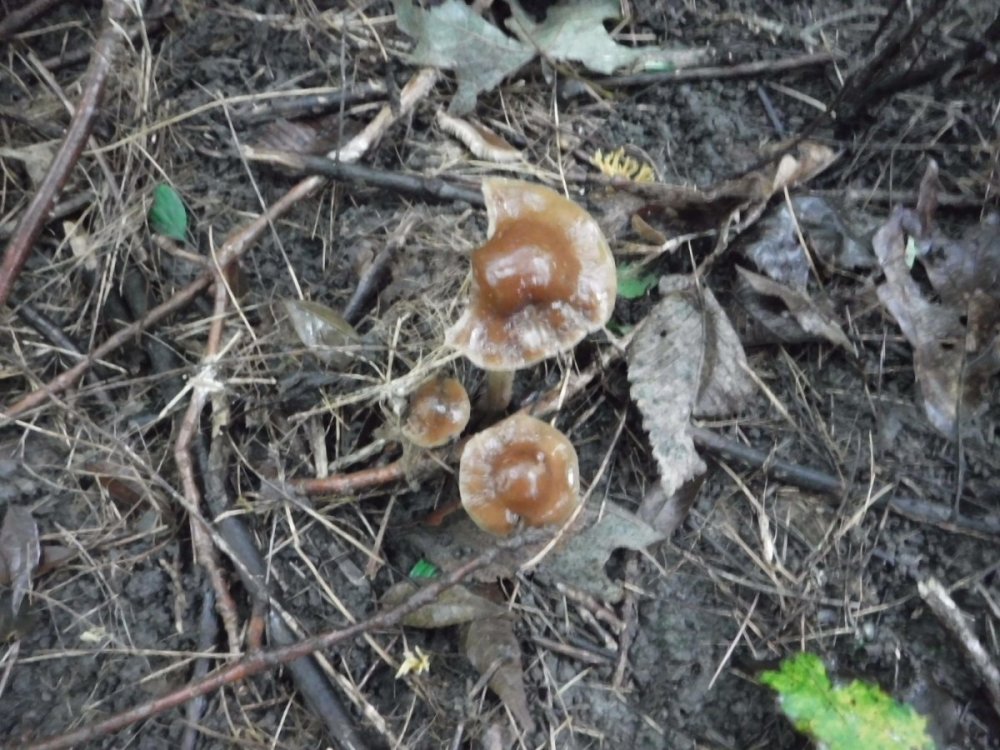

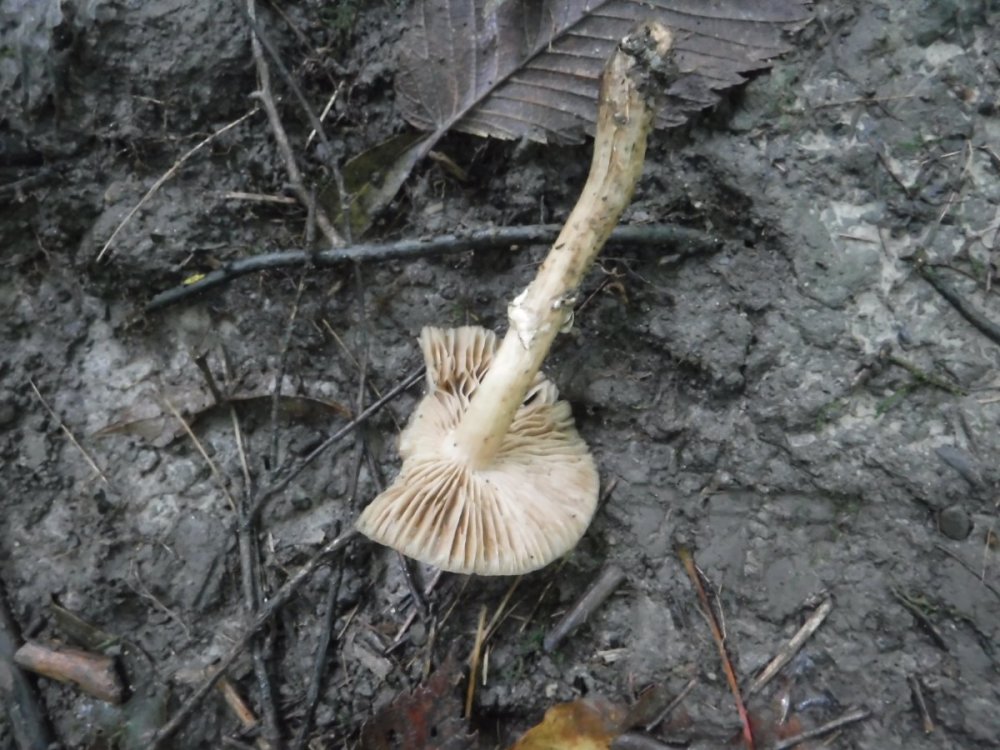
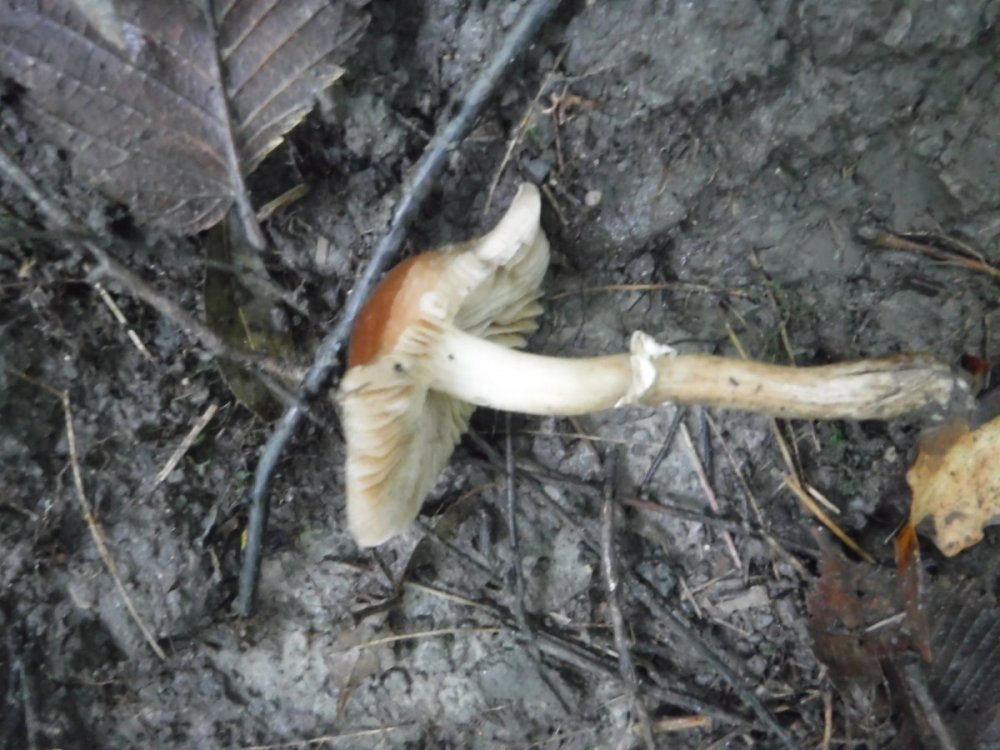
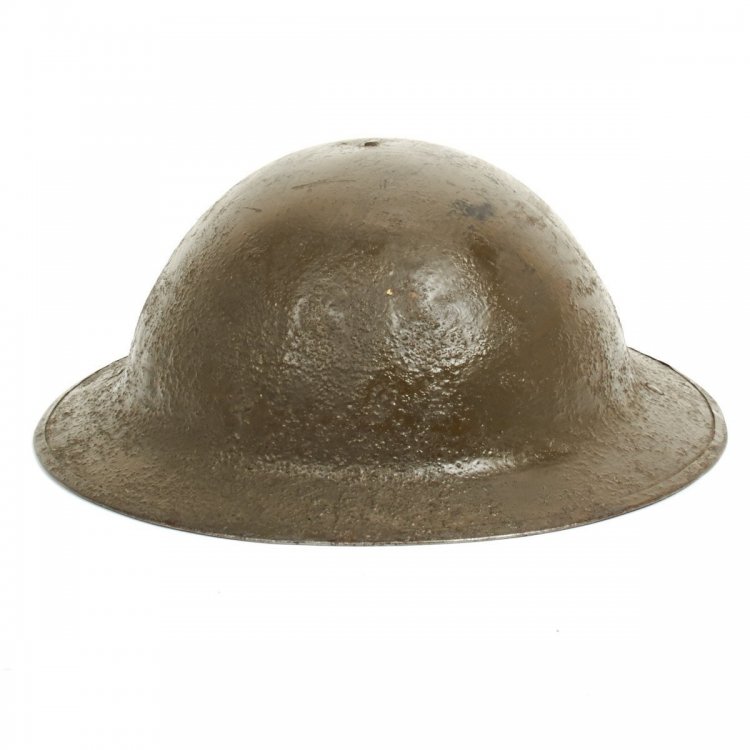
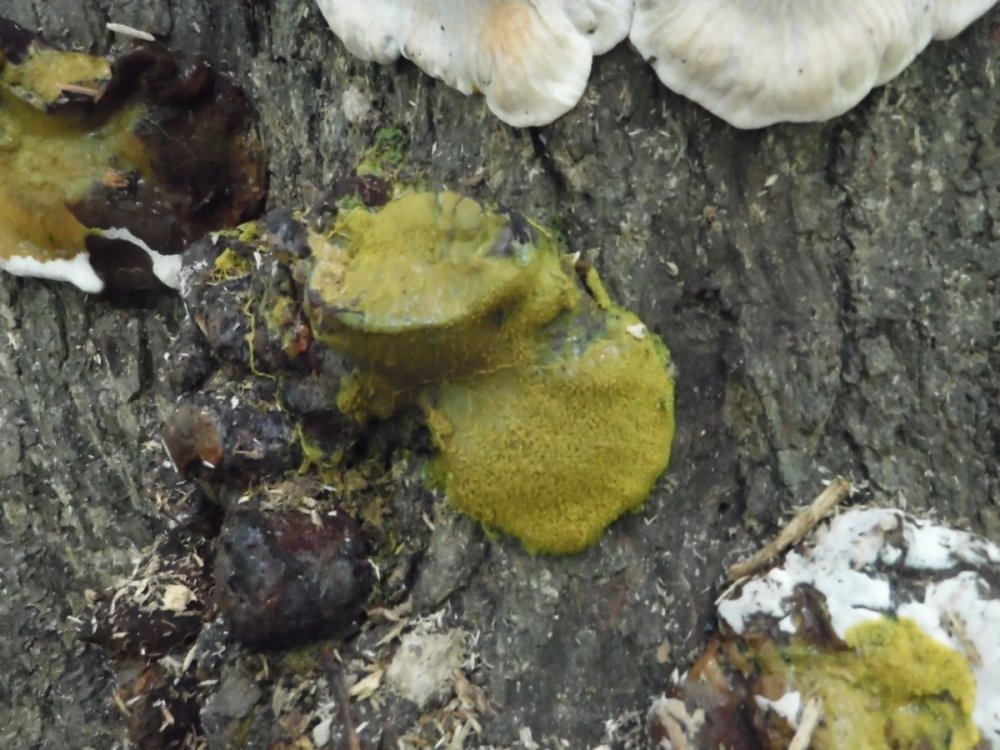
pyriforme2020-10-1002.thumb.jpg.553e76acbd4c888878eeeda63e15a1a4.jpg)
pyriforme2020-10-1003.thumb.jpg.1d2d792543b986a14158e0839e9f2bf1.jpg)
pyriforme2020-10-1004.thumb.jpg.0482ed9b28a1e0827fcb9e79ca076bdb.jpg)
pyriforme2020-10-1005.thumb.jpg.74ad5feec659968031e895f2dc891f35.jpg)
